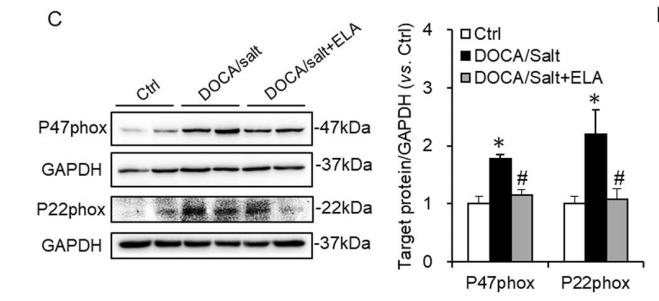NCF1/p47-phox Antibody - #AF5220
| Product: | NCF1/p47-phox Antibody |
| Catalog: | AF5220 |
| Description: | Rabbit polyclonal antibody to NCF1/p47-phox |
| Application: | WB IHC IF/ICC |
| Cited expt.: | WB, IF/ICC |
| Reactivity: | Human, Mouse, Rat |
| Prediction: | Pig, Bovine, Sheep, Rabbit, Dog, Chicken |
| Mol.Wt.: | 47 kDa; 45kD(Calculated). |
| Uniprot: | P14598 |
| RRID: | AB_2837706 |
Related Downloads
Protocols
Product Info
*The optimal dilutions should be determined by the end user. For optimal experimental results, antibody reuse is not recommended.
*Tips:
WB: For western blot detection of denatured protein samples. IHC: For immunohistochemical detection of paraffin sections (IHC-p) or frozen sections (IHC-f) of tissue samples. IF/ICC: For immunofluorescence detection of cell samples. ELISA(peptide): For ELISA detection of antigenic peptide.
Cite Format: Affinity Biosciences Cat# AF5220, RRID:AB_2837706.
Fold/Unfold
47 kDa autosomal chronic granulomatous disease protein; 47 kDa neutrophil oxidase factor; NADPH oxidase organizer 2; NCF 47K; NCF-1; NCF-47K; Ncf1; NCF1_HUMAN; Neutrophil cytosol factor 1; Neutrophil cytosolic factor 1; neutrophil cytosolic factor 1, (chronic granulomatous disease, autosomal 1); Neutrophil NADPH oxidase factor 1; Nox organizer 2; Nox organizing protein 2; Nox-organizing protein 2; NOXO2; p47 phox; p47-phox; SH3 and PX domain containing protein 1A; SH3 and PX domain-containing protein 1A; SH3PXD1A;
Immunogens
A synthesized peptide derived from human P47, corresponding to a region within C-terminal amino acids.
- P14598 NCF1_HUMAN:
- Protein BLAST With
- NCBI/
- ExPASy/
- Uniprot
MGDTFIRHIALLGFEKRFVPSQHYVYMFLVKWQDLSEKVVYRRFTEIYEFHKTLKEMFPIEAGAINPENRIIPHLPAPKWFDGQRAAENRQGTLTEYCSTLMSLPTKISRCPHLLDFFKVRPDDLKLPTDNQTKKPETYLMPKDGKSTATDITGPIILQTYRAIANYEKTSGSEMALSTGDVVEVVEKSESGWWFCQMKAKRGWIPASFLEPLDSPDETEDPEPNYAGEPYVAIKAYTAVEGDEVSLLEGEAVEVIHKLLDGWWVIRKDDVTGYFPSMYLQKSGQDVSQAQRQIKRGAPPRRSSIRNAHSIHQRSRKRLSQDAYRRNSVRFLQQRRRQARPGPQSPGSPLEEERQTQRSKPQPAVPPRPSADLILNRCSESTKRKLASAV
Predictions
Score>80(red) has high confidence and is suggested to be used for WB detection. *The prediction model is mainly based on the alignment of immunogen sequences, the results are for reference only, not as the basis of quality assurance.
High(score>80) Medium(80>score>50) Low(score<50) No confidence
Research Backgrounds
NCF2, NCF1, and a membrane bound cytochrome b558 are required for activation of the latent NADPH oxidase (necessary for superoxide production).
Phosphorylated by PRKCD; phosphorylation induces activation of NCF1 and NADPH oxidase activity.
Cytoplasm>Cytosol. Membrane>Peripheral membrane protein>Cytoplasmic side.
Detected in peripheral blood monocytes and neutrophils (at protein level).
The PX domain mediates interaction with phosphatidylinositol 3,4-bisphosphate and other anionic phospholipids. In the autoinhibited, unphosphorylated state an intramolecular interaction with the C-terminal SH3 domain precludes phospholipid binding and interaction with CYBA. Phosphorylation disrupts the autoinhibited state.
Research Fields
· Cellular Processes > Transport and catabolism > Phagosome. (View pathway)
· Human Diseases > Infectious diseases: Parasitic > Leishmaniasis.
· Organismal Systems > Immune system > Chemokine signaling pathway. (View pathway)
· Organismal Systems > Development > Osteoclast differentiation. (View pathway)
· Organismal Systems > Immune system > Fc gamma R-mediated phagocytosis. (View pathway)
· Organismal Systems > Immune system > Leukocyte transendothelial migration. (View pathway)
References
Application: WB Species: mouse Sample: renal cortex
Application: WB Species: Rat Sample:
Application: IF/ICC Species: Mouse Sample: neutrophils
Application: WB Species: Mouse Sample: neutrophils
Restrictive clause
Affinity Biosciences tests all products strictly. Citations are provided as a resource for additional applications that have not been validated by Affinity Biosciences. Please choose the appropriate format for each application and consult Materials and Methods sections for additional details about the use of any product in these publications.
For Research Use Only.
Not for use in diagnostic or therapeutic procedures. Not for resale. Not for distribution without written consent. Affinity Biosciences will not be held responsible for patent infringement or other violations that may occur with the use of our products. Affinity Biosciences, Affinity Biosciences Logo and all other trademarks are the property of Affinity Biosciences LTD.











